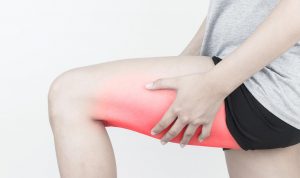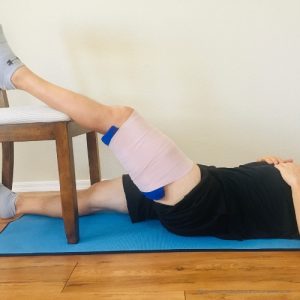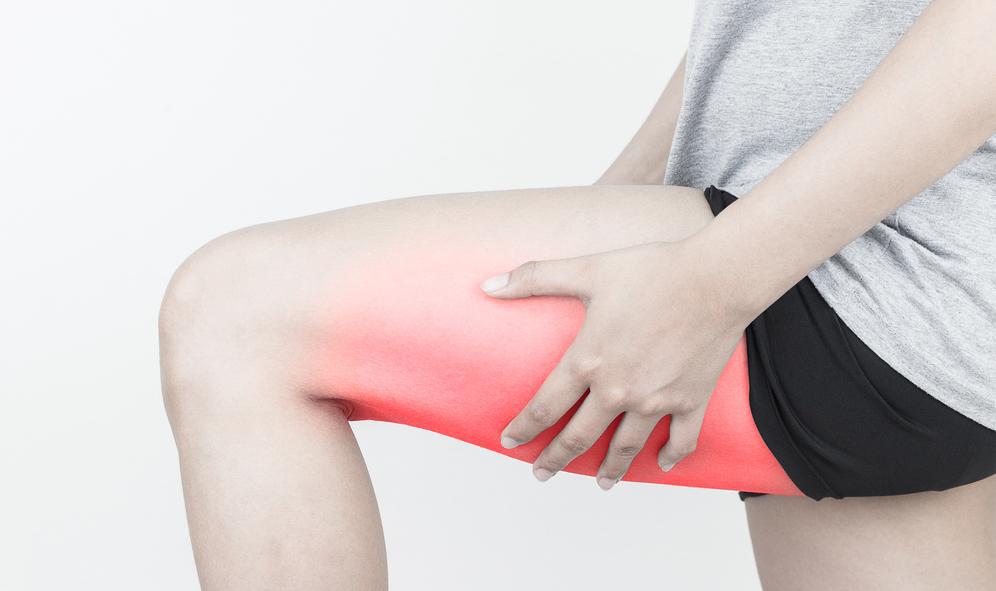What are the hamstrings?
The hamstrings are strong bands of tissue (tendons) at the back of the thighs that attach the
large thigh muscle to the bone. The hamstrings are made up of 3 muscles (The biceps femoris, semitendinosus and semimembranosus) that run along the back of your thigh, from your hip to just below your knee. The hamstrings flex the knee (bend) and are very active in propulsion activities such as running, jumping and climbing.

The cause of a hamstring injury
A hamstring injury can occur if any of the tendons or muscles are stretched beyond their limit. They often occur during sudden, explosive movements, such as sprinting, lunging or jumping. But they can also occur more gradually, or during slower movements that overstretch your hamstring. Recurring injury is common in athletes and sportsmen, as you’re more likely to injure your hamstring if you’ve injured it before. Therefore a extensive rehabilitation program with your physiotherapist is essential! Regularly doing stretching and strengthening exercises, and warming up before exercise, may also help reduce the risk of injuring your hamstring.
The 3 grades of hamstring injury
Grade 1 : a mild strain (sudden pain and tenderness at the back of your thigh. It may be painful to move your leg, but the strength of the muscle should not be affected).
Grade 2 : a partial muscle tear (more painful or tender, some swelling and bruising at the back of your thigh and you may have lost some strength in your leg).
Grade 3 : a complete muscle tear (very painful, tender, swollen and bruised, may have been a
"popping" sensation at the time of the injury and are unable to use the affected leg).
The length of time it takes to recover from a hamstring strain or tear will depend on how severe the injury is. Usually a minor strain (grade 1) may take a few days to heal, whereas it could take weeks or months to recover from a muscle tear (grade 2 or 3). However it is very important to contact your physiotherapist to review the hamstring, to A. determine the grade and to B. set you on the road to recovery.
Recovery and Physiotherapy

During the first 2 or 3 days, you should care for your injury using POLICE therapy:
POLICE stands for protection, optimal loading, ice. It promotes and guides safe and effective loading in acute soft tissue injury management.
Protection– importance of avoiding further tissue damage, but doesn’t infer indefinite immobilization
Optimal Loading– This describes the gentle motion you can start while in the Protection phase.
Ice– Ice affected area for 10 mins (make sure not to burn the site, put a cloth down first).
Compression– Compress the affected injury site with bandage or taping.
Elevation– Elevate the injured limb higher than the hear
After this in the initial stages you then need to contact your physiotherapist to asses the injury and determine a treatment plan. Treatment usually consists of light stretching and strengthening and with soft tissue work and getting you slowly back to your feet and back to all activities over time as allows.
If you would like more information, please contact us on 021 4633455 or you can book an appointment online by clicking here
We hope you enjoyed today’s blog by Kate O’Connor, Chartered Physiotherapist.

